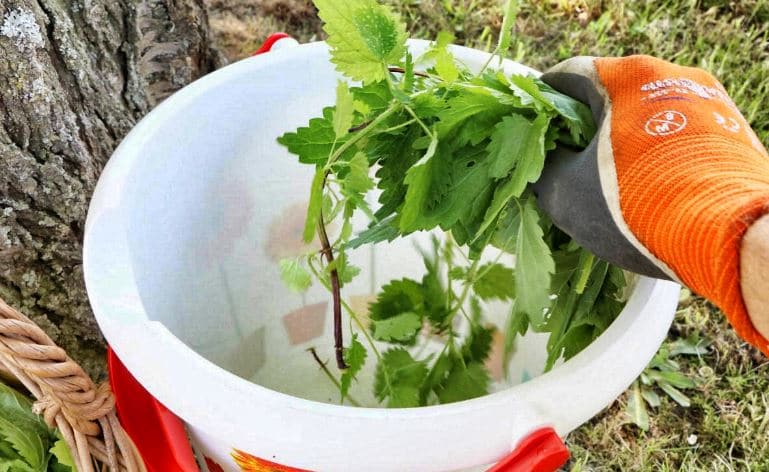Liquid manure can be made from different plants such as nettles, horsetail, garlic, ferns, wormwood, tansy, comfrey… It is renewable, free, inexhaustible and non-polluting. Here are some tips for success in any case!
Liquid manure: what is it?
Liquid manure is in fact the fermented version of maceration which involves letting plants macerate in cold water for a few days. It is an inexhaustible source of fertilizer, and a definite advantage: it is non-polluting. For your liquid manure to be perfect and efficient, all the conditions must be met. If you follow the advice, then you get the perfect fertilizer slurry.
Do you know ?
It is the weed manure that is at the origin of the others and in particular the nettle manure which is renowned for its many variants and qualities. It should be noted that working-class households made their liquid manure from what they found in particular in the ditches where nettles generally grow. It was then that the use of herbal liquid manure developed.
What are the right manure plants?
Thenettle and the comfrey : these are the two favored plants for a very good quality fertilizing liquid manure. Nettle has the specificity of absorbing larger quantities of nitrogen, while comfrey mainly absorbs more potash.
Rhubarb leaves, borage, squash leaves, Turkish comfrey, carrot tops also provide quality fertilizers. Warning ! all of these plants should only be used if they are healthy and free from disease.
Horsetail, sagebrush and wormwood are not very useful when used in fertilizer.
How to do ?
Dry the comfrey or nettle leaves, they must be brittle. Put on good gloves and crumble them into fine crumbs, keep everything dry. This freeze-dried version can be used to make macerations when you need them.
Good advice
Dose the components correctly to obtain quality manure
Take:
1 kilo of fresh matter or 200 grams of dry matter for 10 liters of water. Liquid manure produced in small quantities and less volume is also less efficient.
Chop the plants well
Grind the components with a trimmer or cut them into pieces with pruning shears.
Keep them cool
Put fresh water to make liquid manure and place your preparation in the shade, especially if in the period from May to September.
Stir often!
It is the secret of a good manure, it is necessary to mix once or twice a day, during a few weeks and especially at the beginning. This is essential for making quality manure. Moreover, the pros use small engines that are triggered several times a day.
Patience
It is also essential, you have to wait long enough. If the liquid manure stirred regularly does not smell bad, it only fertilizes after at least 10 days. During all this time, you must brew it regularly.
Filter
At the end of the fermentation phase in water, the juice you have obtained must be filtered through a sieve or a cloth. It is a way to immediately stop the fermentation. The liquid manure then keeps its fertilizing qualities indefinitely.
Dilute before use
Liquid manure can only be used when you have diluted it beforehand. Only then can you put it at the foot of the plant. Most often, it should be diluted to 20%. You can then count one volume of liquid manure for 4 volumes of cold water. However, you must inquire before, because depending on the plants, this may vary.
Read also :








